Equipment
The Fujikura Fit-On Academy Experience
The Fujikura Fit-On Academy gives the everyday golfer a fitting experience that is fit for a pro. Using proprietary software, Fujikura compiles measurements of every club and all aspects of a swing in order to recommend the perfect shaft. The Academy is headed by Pat McCoy, a PGA of America member with years of experience fitting tour pros. McCoy and his staff find the “unique, one-of-a-kind thumbprint for a swing” that every golfer has.
Depending on the fitting package chosen, your experience can include a tour of the R&D Facility. During this time, you may hear something like when we visited McCoy and his intern Marshall Thompson:
“We at Fujikura needed a place where we could quickly test shafts and evaluate product quickly and easily for all of our customers and tour professionals. We test inside with Trackman and have an additional facility where we can test performance outdoors. Ultimately we also wanted to be able to bring in the consumer to see how we fit tour professionals and give them the experience and information to improve their game. We have many different heads to try out, nearly every one on the market and just about every golf ball so that we can fit any golfer. The common denominator with all of that is, of course, the shaft. We can fit for so many different swings with so many different shafts and wanted to show the customer that differences in shaft, loft, lie, weight, etc. can make a difference in their game. For example, one manufacturer with several head models enables us to offer 987 different fitting combinations.
We have a proprietary software program that we are able to put in all of a player’s information and have access to it everywhere we travel. In addition, the software is able to help other fitters with finding a player’s ideal fit since there are so many possible combinations.”
Part of the experience of the Fujikura Fit-On Academy is a complete measurement of your current bag. At this point, the loft, lie, etc. are carefully measured and recorded. A golfer will learn whether there is the right amount of loft between irons, both numerically and with graphical representation among other things (like lie and face angle).
McCoy went on to explain the engineering processes and machinery in a tour of the facility, which included a sneak peek at some soon-to-be released technology and a bit of the Facility’s history:
“The EI Machine is a new prototype that Fujikura will be selling to the industry in the future. This can measure the EI or flex curvature of a shaft in less than 2 minutes and can even measure an assembled golf club. Basically the shaft is measured by how well it retains it’s flex throughout when it is deflected. The machine bends the shaft and measures the entire length via laser and records the outside diameter and inside diameter while it is being flexed. It is a unique technology to the industry due to the speed and the fact that it can measure an entire club. In the past it would take over 10 minutes to measure a shaft and you could never measure an entire club.
We also have a fatigue machine that OEMs have purchased from us. What we do with this is bend the shaft while it is turning. This finds out where the shaft might fail. The machine goes up and down the shaft while it spins in tension. We run a computer program with this that tells us where the shaft failed and how long it took to fail. For example, the program will apply a certain amount of pressure for a specific time period, say two days, and tell us when that shaft failed. This machine will be a Fujikura-branded machine that will be manufactured and sold in the future.
When I first started eight years ago, Fujikura had a manufacturing facility with a staff of about 400 employees here in Vista, CA. Because of rising costs, we shut our facility down. In order to still support the major golf club manufacturers with top quality designs, we opened the Fujikura R&D facility. This facility has the same machinery and production capability of our factories overseas but at a much smaller scale. This has enabled Fujikura to design rapid prototype shafts and then easily transition these designs to our overseas facilities for mass production. The Fit-On Academy was created to use this prototyping capability to test and help design new and improved shafts designs for all level of players."
The Making of A Shaft
McCoy takes us through the making of a shaft: “What makes our shafts as good as they are is the material that we have in the shafts. One material is the TRIAX which is in our Speeder, the go-to shaft. Triax enables the shaft to return to its straight shape more quickly than conventional graphite shafts. It almost acts like a spring or a whip through the hitting area for increased clubhead speed. We have several other materials that are patented that only Fujikura uses in the golf shaft industry. Depending upon whether we are putting together the Speeder, Rombax, or next generation shaft s, all our shafts use the highest technology materials in the shaft industry.” During this time one sees the different sheets of the materials that will eventually become the shaft. The components are cut into the constituent parts and carefully layered. McCoy explains that there can be from about 5 plies of material up to 15 depending on the weight and flex of the shaft. The overall goal is always to make the shaft as round, or circular, as possible. The engineers at the facility have taken out all matter of chance in making the shafts as all specs are pre-determined. This means that it is known how each shaft will turn out (tip and butt flex, EI, weight, torque) before it is even made. There are machines that cut all of the materials and rolling presses in order to keep the integrity of the measurements, leaving nothing to chance. This makes reproducible, predictable results of a high quality. The process includes checkpoints that assure the quality of the shafts before they are cured. After shafts are cured they are meticulously examined for any flaws. The flex is checked digitally after the process is complete. There are machines that check the flex of the shafts with weights that some of the OEMs use to also check the specs in a more old-fashioned method. There is no “standard” for the shaft industry – most manufacturers have their own set of measurements that they consider to be ideal. In addition, measurements are not always taken from the same part of the shaft, further differentiating specs between different manufacturers.
The Fitting
Fujikura did not want to be in the dark about any club and wanted to be the source for knowing everything about a club. The first thing that happens with all of the products used in the fittings is meticulous measurements. When you see the drawers full of heads and other club pieces, each has a sticker that tells exactly what its measurements are (loft, lie, bulge, roll, etc.). They know everything about a club before putting it into a golfer’s hands. Everyone knows that a club that says 8.5 is not always an 8.5, after all. This is the case for the heads as well as the shafts (length, weight, etc.). In fact, Fujikura teaches other fitters to have different lengths, kickpoints, and other metrics in order to have more options to do a proper fitting. Indeed, the Fit-On Academy is quite thorough.
Trackman, the software, the screen…it’s all there…your measurements are meticulously recorded. Your clubs, your swing, everything. You don’t realize just how thorough your fitting was until about a week later. There you are, still euphoric over the entire experience when you check your mail. In your mailbox is a large manila envelope from Pat McCoy and his staff. You open it to find a folder with measurements of your club (or entire bag, depending on which fitting you opt for). The club, head, shaft, grip, loft, lie, and length are all recorded in a table. Next, if you have your entire bag measured will be graphs of length, loft, lie, swing weight, and weight. This is to show any gaps in your current system. Finally, a recommendation page with specs for what you have been fitted for. In addition, for each club that you are fitted for will be shot-by-shot Trackman details with averages, a graph of dispersion, and a trajectory graph are included. You’ll find these for both your club and the recommended club. Finally, a DVD (if included in your fitting package) shows your swing and includes lines for you to see your swing plane. When you come back down to Earth, you’ll realize that you have extremely valuable information that can only serve to improve your game. Now, you must act on it.
A Word From The President
Newly-minted President of Fujikura, Dave Schnider, has been with the company for nine years and at his current post since April 2008. Prior to his tenure with the company he was with Grafalloy, True Temper, and a college golfer at San Diego State University. We found out from Schnider that the Fit-On Academy is a big part of Fujikura’s plan here in the States. The company has done fittings in Japan for nearly ten years and they have more recently made this available to the US market. The company has learned so much about fitting from Japan and tour pro fittings that they now offer the everyday golfer this exceptional experience to improve their game. Being tied in to the R&D facility also gives them the ability stay in touch with all golfers’ needs. Fitting remains a top priority for the company.
The new shaft line – the ATL, or Academy Tour Limited – will soon be available. This line is designed for the PGA Tour and better players out there. In fact, the shafts will first be seen on Tour in late November/early December. Even so, the company is interested in being accessible to all golfers. The Fit-On Academy is to give the rest of us that Tour fitting experience that used to only be available to the pros. “The Tour player gets such a benefit from being properly fit. We wanted to bring this to more golfers”, says Schneider. The future of shafts at Fujikura will expand to fit mid-handicap and more players. Essentially, the E Series will already suit a large majority of golfers.
And By The Way
Everyone we met at the facility is an exceptional golfer in their own right. McCoy claims that he’s “not that great at only about a 4 or 5 handicap”, intern Thompson is a scratch golfer, and Schneider is a +2.
See For Yourself
With several options for a fitting – from one club to your whole bag – prices start at only $75. Check the Fujikura website here for all of the package details.
- LIKE1
- LEGIT0
- WOW0
- LOL0
- IDHT0
- FLOP0
- OB0
- SHANK0
Whats in the Bag
Kris Kim WITB 2024 (May)

- Kris Kim what’s in the bag accurate as of the CJ Cup Byron Nelson. More photos from the event here.
Driver: TaylorMade Qi10 (9 degrees @7)
Shaft: Mitsubishi Tensei 1K White 60 TX
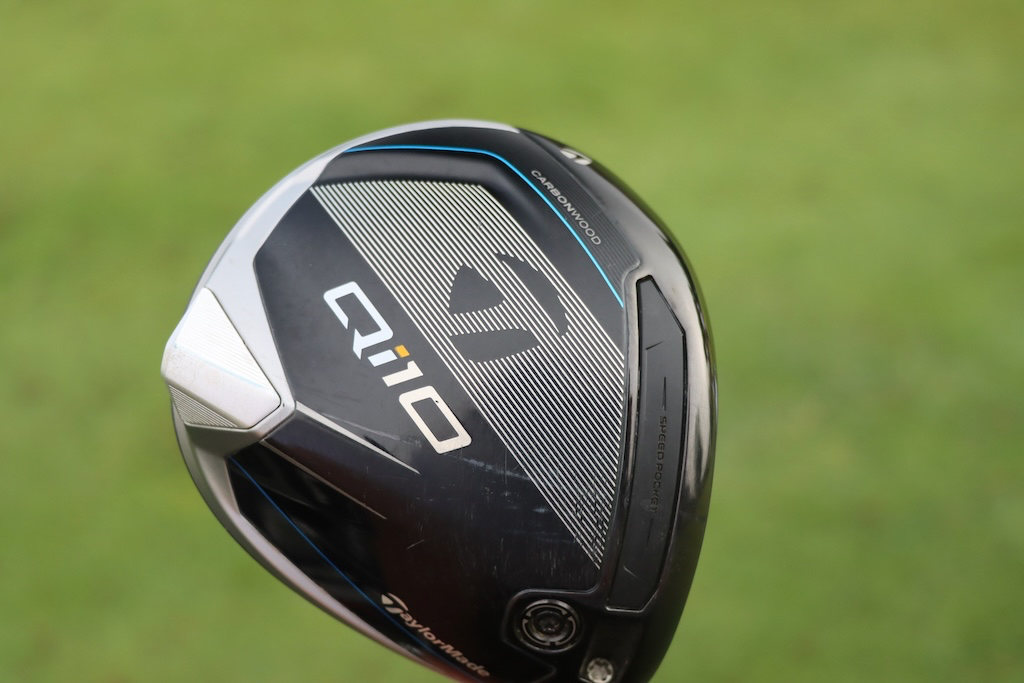

3-wood: TaylorMade Qi10 Tour (15 degrees @13.5)
Shaft: Mitsubishi Diamana WB 73 TX
Irons: TaylorMade P770 (2, 4), TaylorMade P7MB (5-PW)
Shafts: Mitsubishi Tensei 1K White 80 TX (2), Nippon N.S. Pro Modus3 Tour 120 X
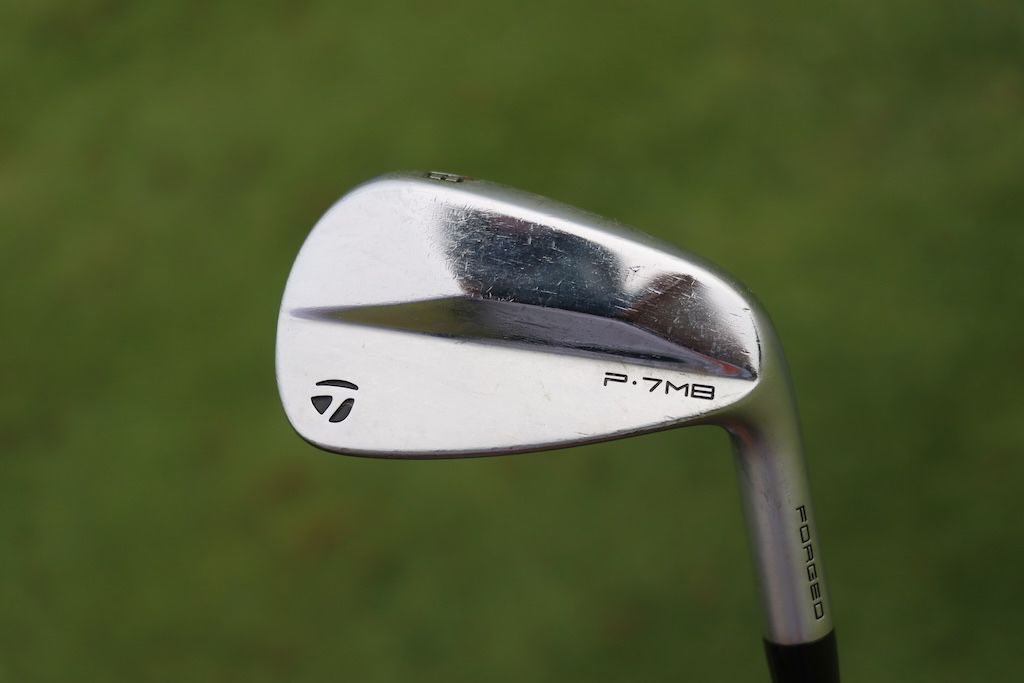

Wedges: TaylorMade MG4 (50-09SB, 56-12SB, 60-11TW)
Shafts: Nippon N.S. Pro Modus3 WV 125
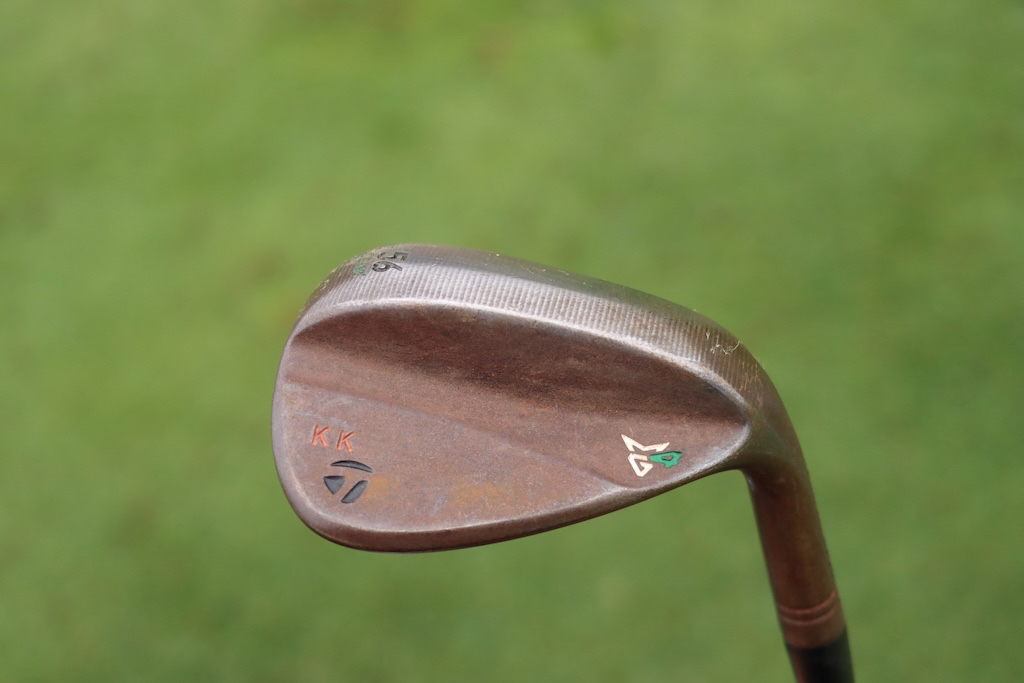

Putter: TaylorMade Spider Tour
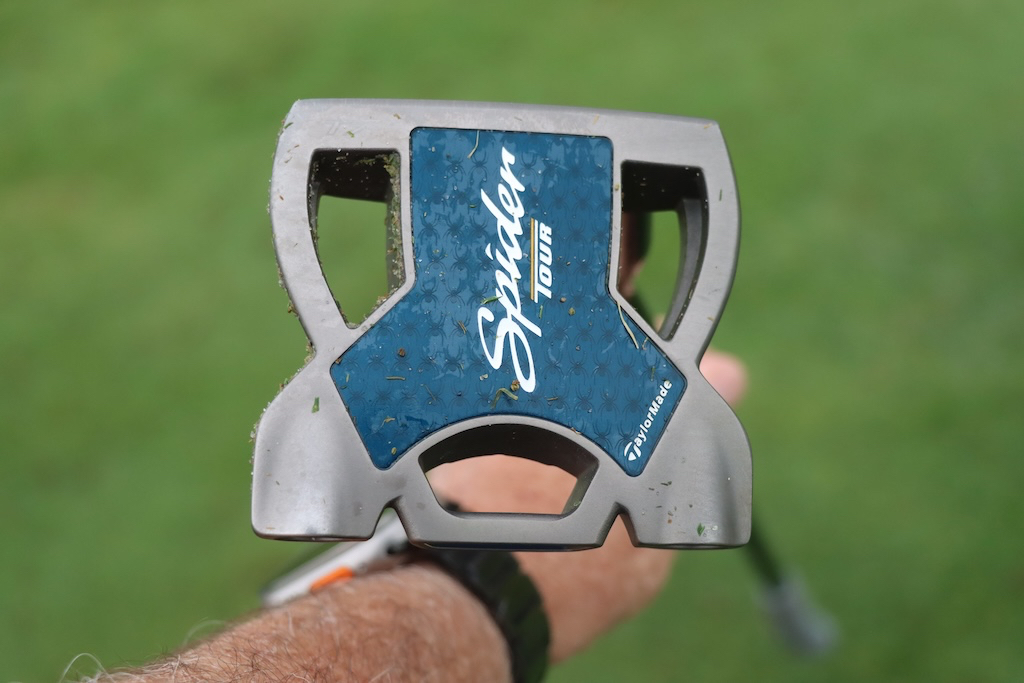
Grips: Golf Pride Tour Velvet Cord
Check out more in-hand photos of Kris Kim’s equipment here.
View this post on Instagram
- LIKE0
- LEGIT0
- WOW0
- LOL0
- IDHT0
- FLOP0
- OB0
- SHANK0
Equipment
Welcome to the family: TaylorMade launches PUDI and PDHY utility irons
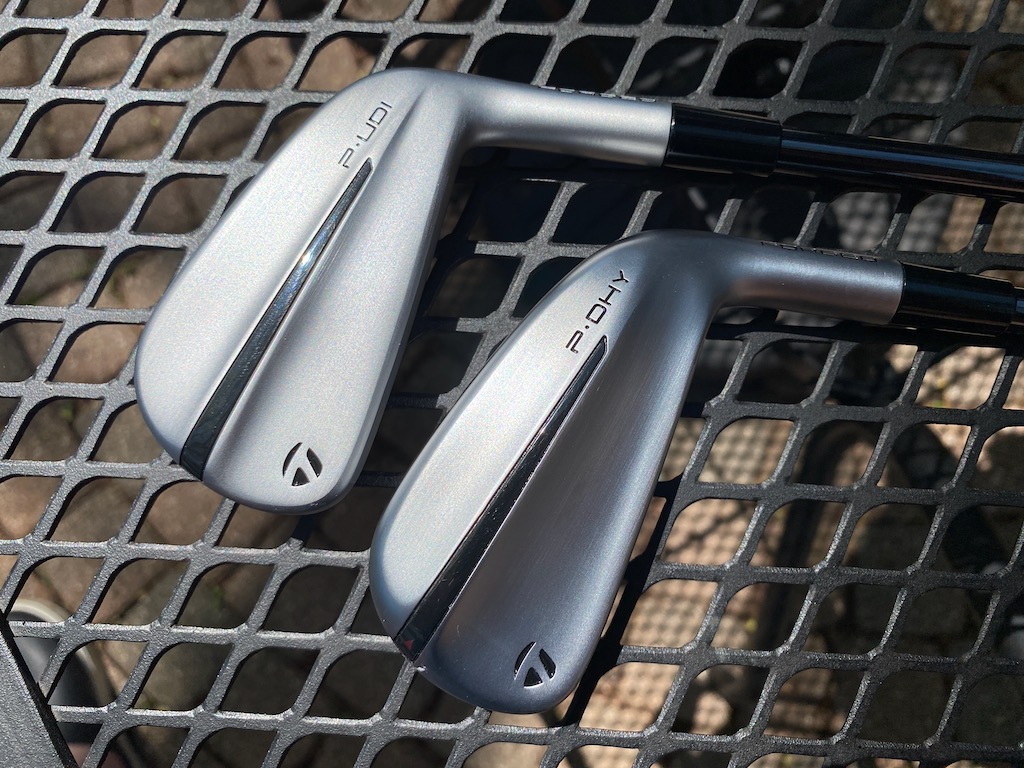
TaylorMade is continuing its UDI/DHY series with the successor to the Stealth UDI and DHY utility irons: PUDI and PDHY (which the company styles as P·UDI and P·DHY). TaylorMade is folding the designs in with its P Series of irons.
TaylorMade outlined the process of developing its new utilities this way. The company started with the data on utility iron usage. Not surprisingly, better players — i.e. those who generate more clubhead speed and strike the ball more precisely — were found to gravitate toward the UDI model. DHY usage, however, covered a wider swath than the company might have expected with six-to-18 handicappers found to be bagging the club.
TaylorMade also found that the majority of golfers playing UDI or DHY utilities were playing P Series irons at the top of their iron configurations.
Can you see where this is going?
Matt Bovee, Director of Product Creation, Iron and Wedge at TaylorMade: “As we look to the future, beyond the tech and the design language, we are excited about repositioning our utility irons into the P·Series family. P·UDI is an easy pair for players that currently play P·Series product and P·DHY is an extremely forgiving option for players of all skill levels. It is a natural fit to give these players the performance in this category that they are looking for.”
View this post on Instagram
TaylorMade PUDI
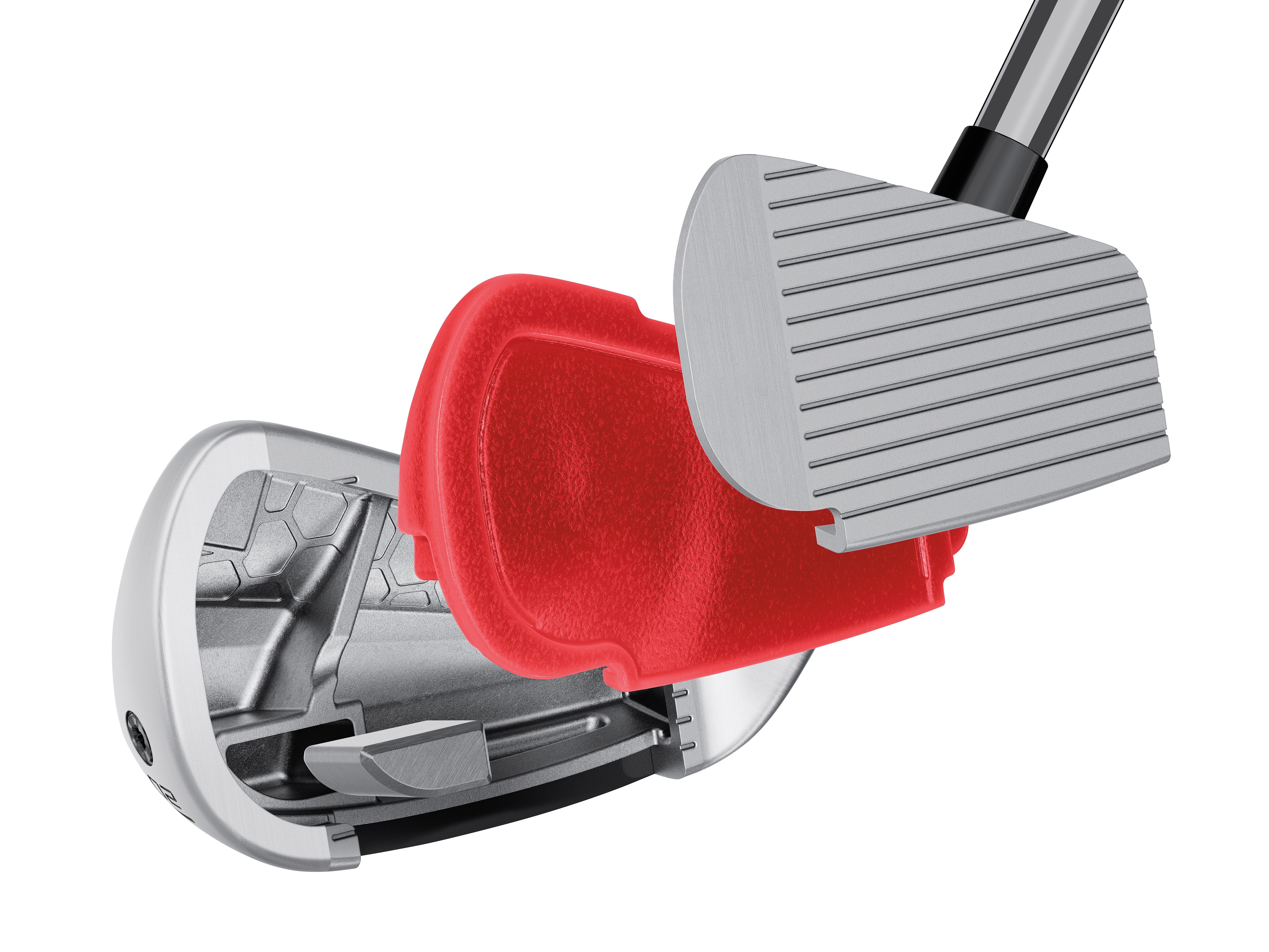
TaylorMade PUDI technology cutaway (via TaylorMade)
Crafted with tour player input, TaylorMade sought to develop a confidence-inspiring utility iron that blends with the rest of the P Series irons. Also of note: Interestingly, the PUDI has a more compact head than the P790.
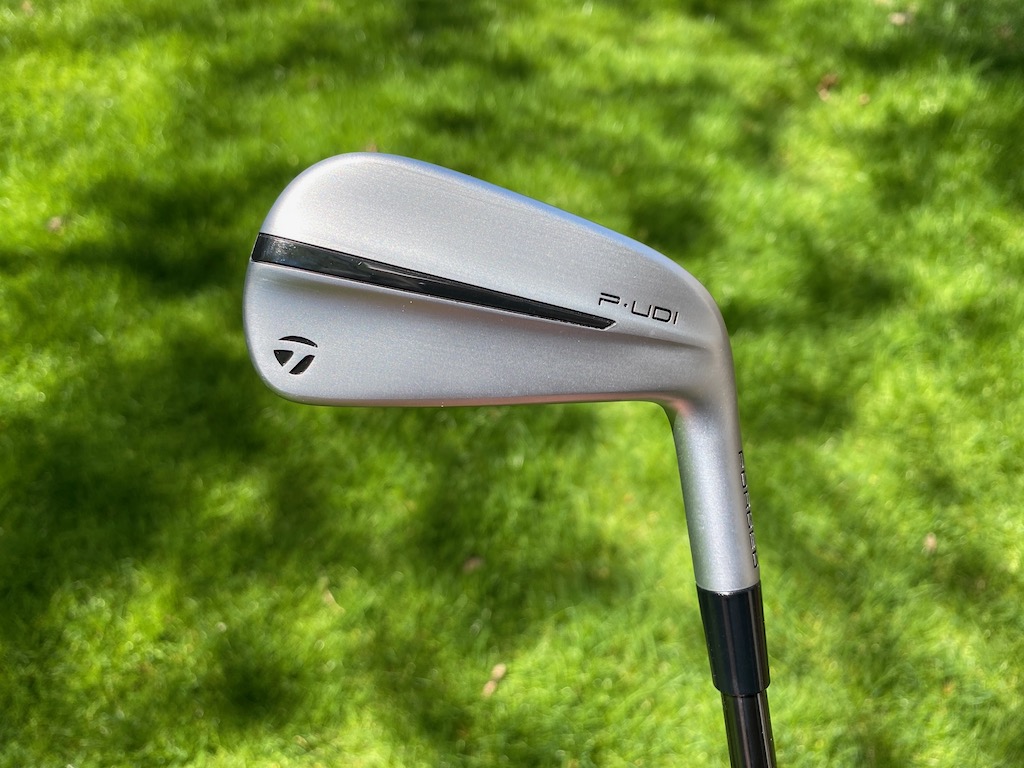
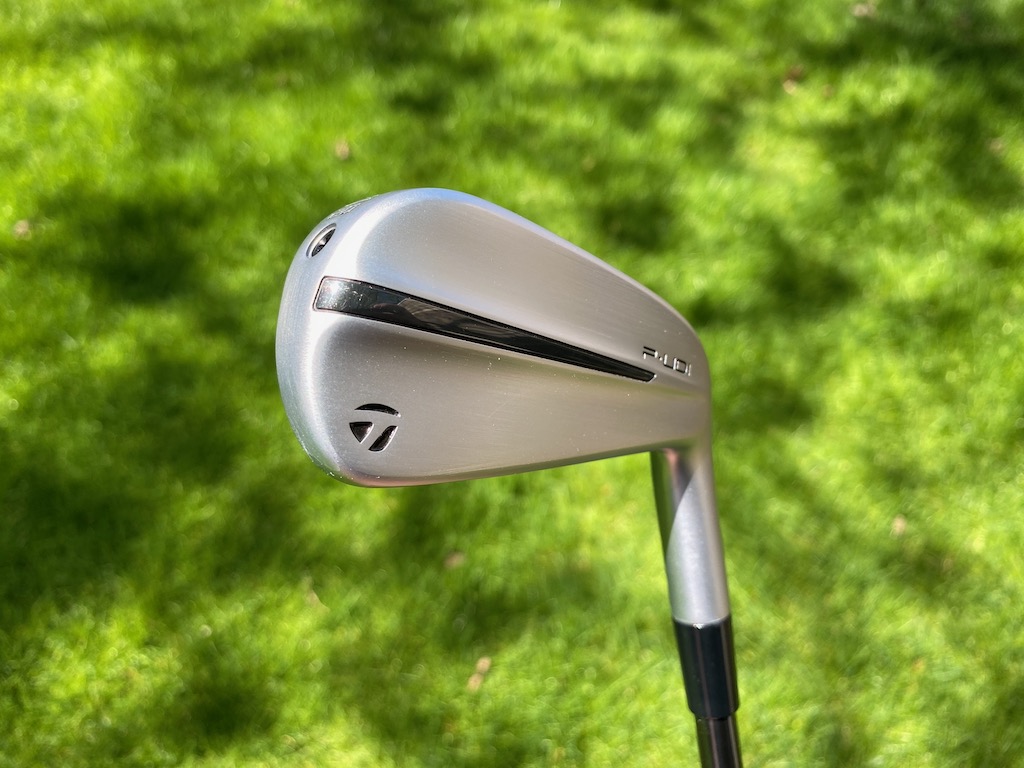
In comparison to past UDI products, the PUDI has a more traditional iron shape, slimmer toplines, and less offset with a little of the backbar visible at address.
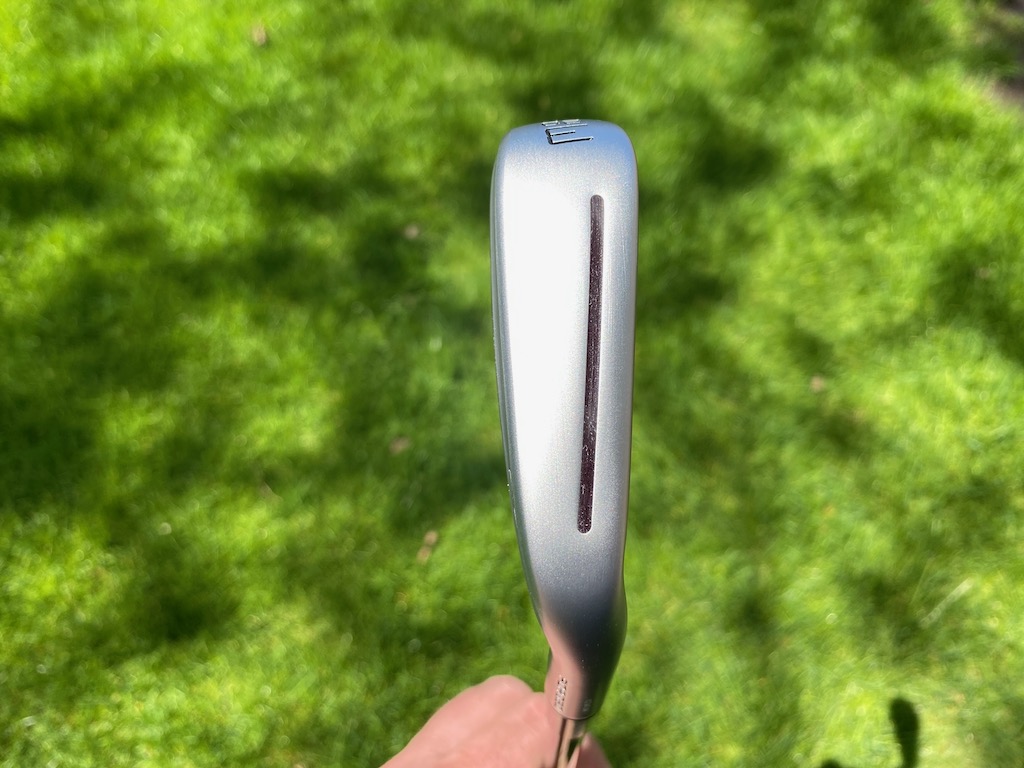

TaylorMade PDHY
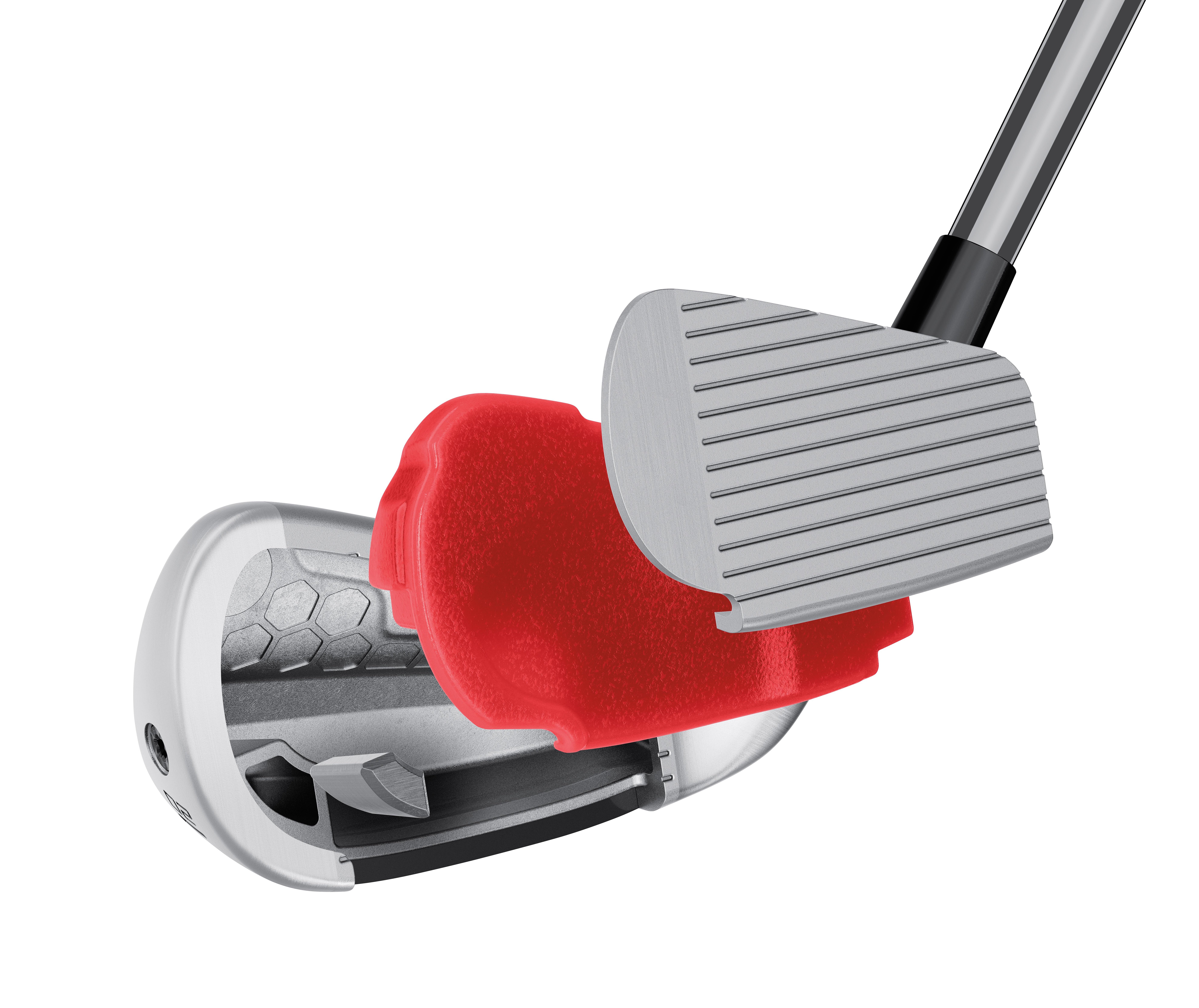
TaylorMade PDHY tech cutaway (via TaylorMade).
Larger in profile than the PUDI, the PDHY seeks to position center of gravity (CG) lower in the club for ease of launch. The toe height is larger and the profile is larger at address — roughly five millimeters longer than PUDI — the sole of the club is wider for improved forgiveness.
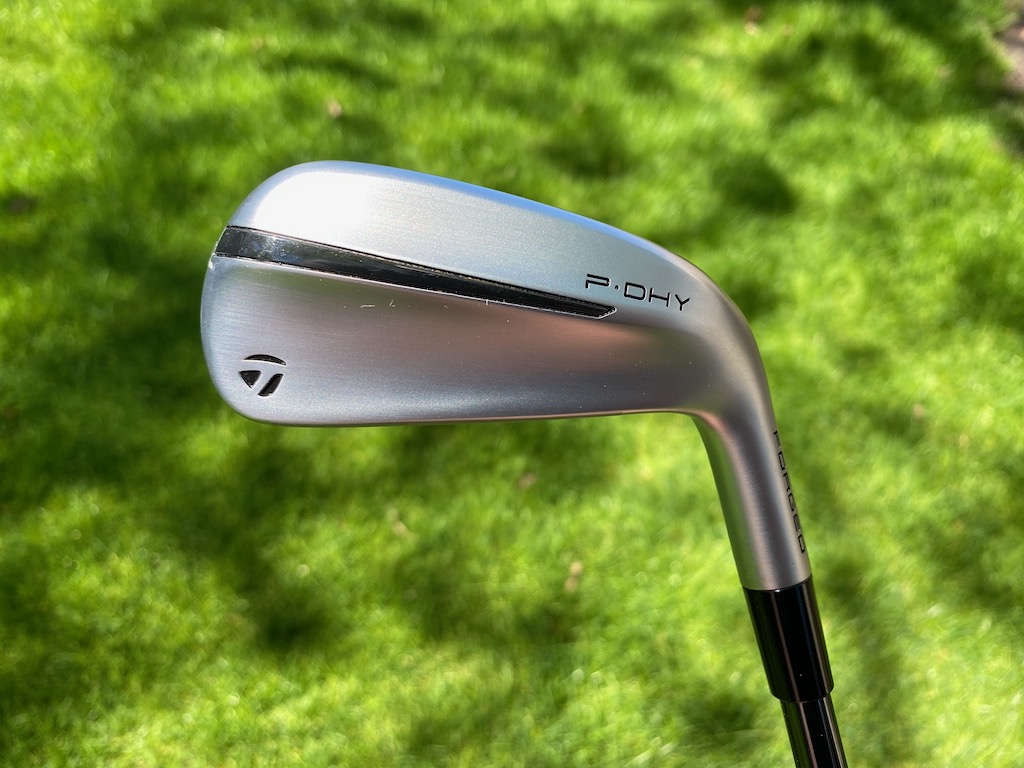



Club Junkie’s take
Golfers who feel like they are missing something at the top of the bag could find the PUDI or PDHY a great option. The look of the PUDI should fit the most discerning eye with a more compact look, less offset, and a thinner topline. If you want a little more confidence looking down the P-DHY will be slightly larger while still being a good-looking utility iron.
For being small packages both models pack a pretty good punch with fast ball speeds, even off-center. The feel is soft and you get a solid feel of the ball compressing off the face when you strike it well. Your ears are greeted with a nice heavy thud as the ball and club come together. The PDHY will launch a little higher for players who need it while the PUDI offers a more penetrating ball flight. Both utility irons could be the cure for an open spot in the top end of the bag.
PUDI, PDHY, or Rescue?
TaylorMade offers the following notes to assist golfers in filling out their bags:
- PUDI has mid-CG right behind the center face to create a more penetrating mid-to-low ball flight
- PDHY has a lower center of gravity to produce an easier-to-launch mid-to-high ball flight.
- Both PUDI and PDHY are lower-flying than the company’s hybrid/Rescue clubs.
- PUDI is more forgiving than P790.
- PDHY is the most forgiving iron in the entire TaylorMade iron family
Pricing, specs, and availability
Price: $249.99
At retail: Now
Stock shafts: UST Mamiya’s Recoil DART (105 X, 90 S and 75 R – only in PDHY)
Stock grip: Golf Pride’s ZGrip (black/grey)
PUDI lofts: 2-17°, 3-20°, 4-22° in both left and right-handed
PDHY lofts: 2-18°, 3-20° and 4-22° in both left and right-handed
- LIKE4
- LEGIT2
- WOW0
- LOL0
- IDHT0
- FLOP0
- OB0
- SHANK0
Equipment
Coolest thing for sale in the GolfWRX Classifieds (5/3/24): Scotty Cameron Champions Choice 2.5+ putter

At GolfWRX, we are a community of like-minded individuals that all experience and express our enjoyment of the game in many ways.
It’s that sense of community that drives day-to-day interactions in the forums on topics that range from best driver to what marker you use to mark your ball. It even allows us to share another thing we all love – buying and selling equipment.
Currently, in our GolfWRX buy/sell/trade (BST) forum, there is a listing for a Scotty Cameron Champions Choice 2.5+ putter
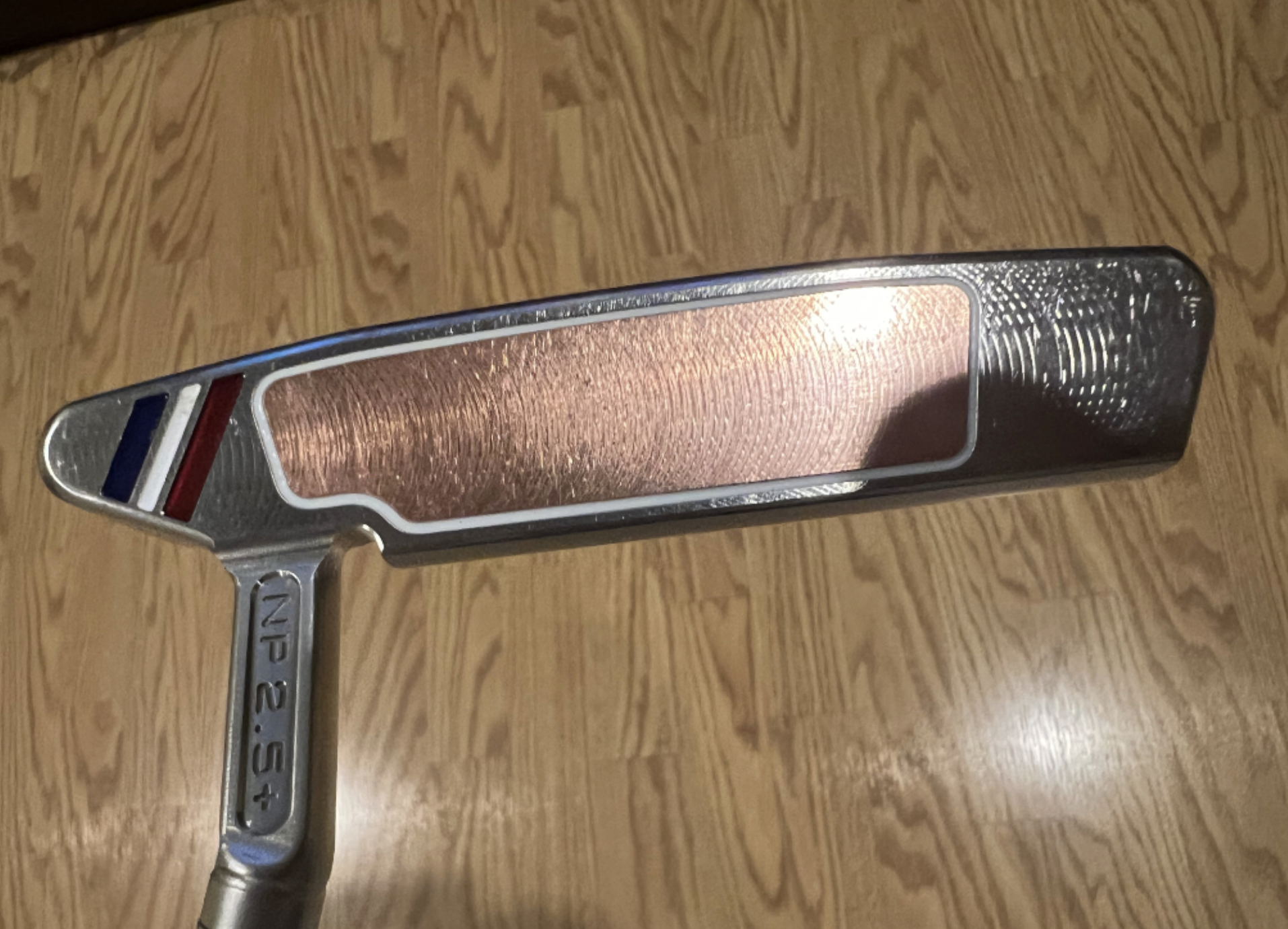
From the seller: (@wwcl): “Has been gamed as pics show. 33.5 includes original h/c and grip. $575 includes shipping and PP fees.”
To check out the full listing in our BST forum, head through the link: Scotty Cameron Champions Choice 2.5+ putter
This is the most impressive current listing from the GolfWRX BST, and if you are curious about the rules to participate in the BST Forum you can check them out here: GolfWRX BST Rules
- LIKE1
- LEGIT0
- WOW0
- LOL0
- IDHT0
- FLOP0
- OB0
- SHANK0
-

 19th Hole2 weeks ago
19th Hole2 weeks agoJustin Thomas on the equipment choice of Scottie Scheffler that he thinks is ‘weird’
-

 19th Hole2 weeks ago
19th Hole2 weeks ago‘Absolutely crazy’ – Major champ lays into Patrick Cantlay over his decision on final hole of RBC Heritage
-

 19th Hole3 weeks ago
19th Hole3 weeks agoTwo star names reportedly blanked Jon Rahm all week at the Masters
-

 19th Hole2 weeks ago
19th Hole2 weeks agoReport: LIV Golf identifies latest star name they hope to sign to breakaway tour
-

 19th Hole3 weeks ago
19th Hole3 weeks agoNeal Shipley presser ends in awkward fashion after reporter claims Tiger handed him note on 8th fairway
-

 19th Hole2 weeks ago
19th Hole2 weeks agoBrandel Chamblee has ‘no doubt’ who started the McIlroy/LIV rumor and why
-

 19th Hole1 week ago
19th Hole1 week agoLET pro gives detailed financial breakdown of first week on tour…and the net result may shock you
-

 Equipment2 weeks ago
Equipment2 weeks agoJason Day on his recent switch into Srixon ZX5 and ZX7 Mk II irons

















